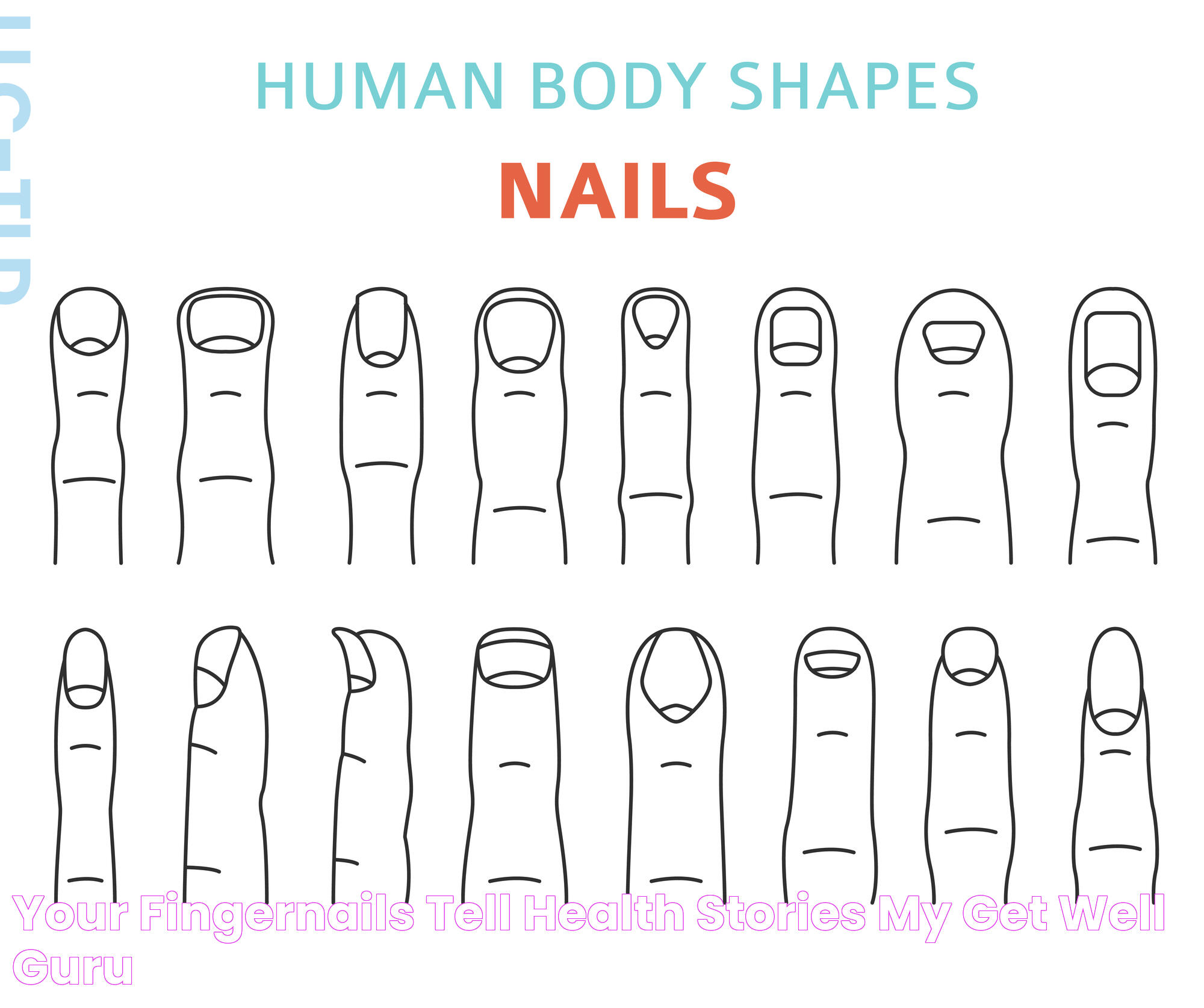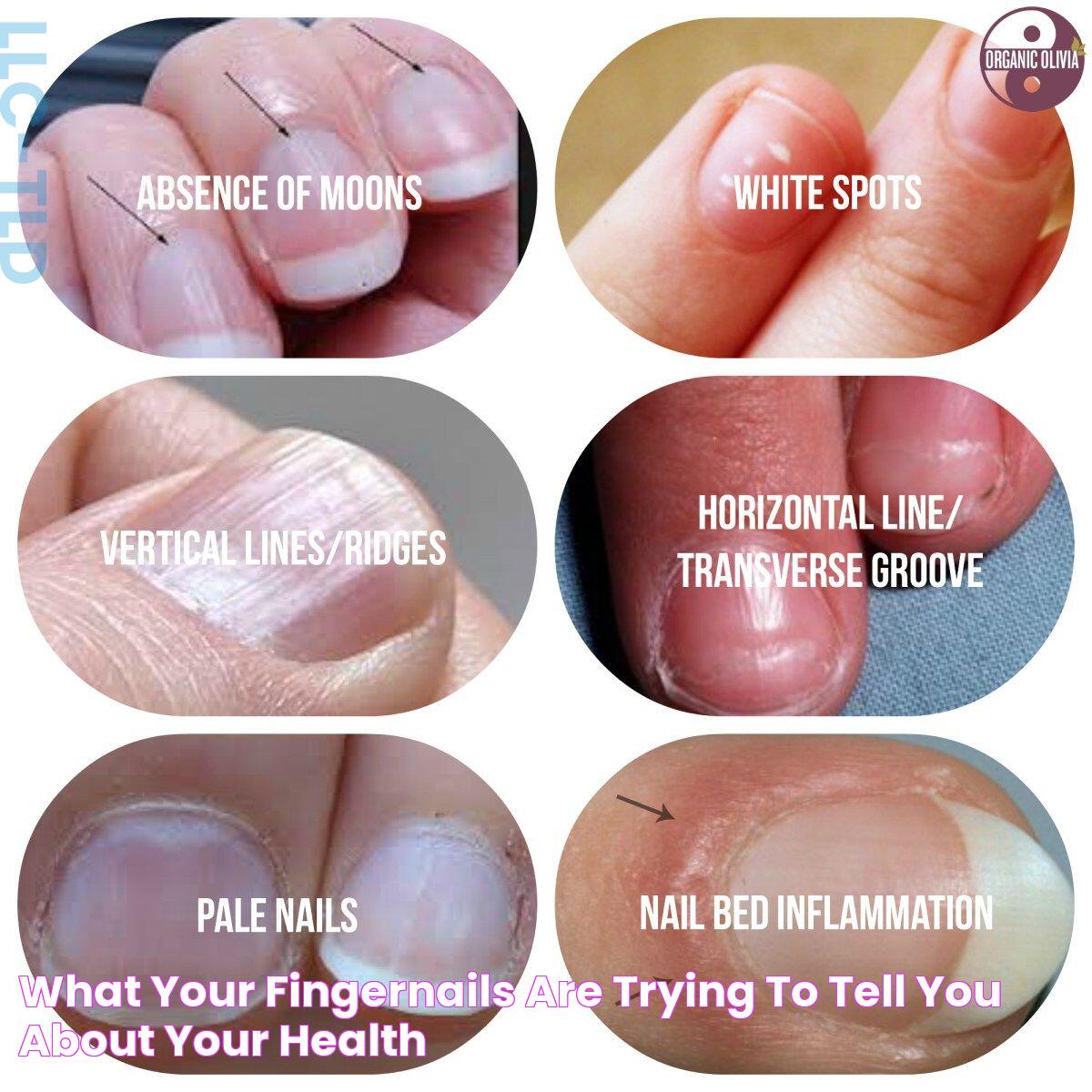Your fingernails are more than just a canvas for nail polish or a tool for scratching an itch. They are also a window into your overall health, offering subtle yet significant clues about what might be happening inside your body. Paying attention to changes in your nails can help you detect health issues early, allowing for prompt intervention. From discoloration to texture changes, your nails can reveal much more than you might expect.
In this comprehensive guide, we will delve into the various signals your fingernails might be sending you about your health. By understanding these signs, you can take proactive steps to maintain not only your nail health but also your general well-being. We will explore different nail conditions, their potential causes, and how to address them effectively. Whether you're worried about white spots, ridges, or unusual colors, this article has you covered.
Moreover, we'll provide practical tips for maintaining strong, healthy nails and discuss when it's time to consult a healthcare professional. With this knowledge in hand, you'll be better equipped to interpret what your fingernails are telling you and to make informed decisions about your health care. Don't ignore these small but mighty indicators; they could be the key to unlocking important information about your body's needs.
Read also:A Comprehensive Guide To Curly Locs Beauty Maintenance And Styling Tips
Table of Contents
- Biological Function of Fingernails
- What Can Fingernails Indicate About Your Health?
- Common Nail Disorders and Their Significance
- How to Assess Nail Health at Home?
- What Do Different Nail Colors Mean?
- Nail Texture Changes and What They Signify
- Nail Shape Abnormalities and Causes
- Dietary Influences on Nail Health
- How to Care for Your Nails?
- When to See a Doctor About Your Nails?
- Nail Health Myths Debunked
- Nail Care Products and Their Effects
- Frequently Asked Questions About Nail Health
- Conclusion
Biological Function of Fingernails
Fingernails, composed primarily of a protein called keratin, serve several important biological functions. They protect the sensitive tips of our fingers and toes, making it easier to grasp small objects and perform delicate tasks. Additionally, nails can enhance our sense of touch and even help us gauge the health of our internal systems.
The growth and health of fingernails are influenced by various factors, including age, diet, and overall health. Nails grow from the area under your cuticle, known as the matrix, where new cells are produced and pushed outwards, hardening as they go. This process is continuous, though the rate of growth can vary due to factors such as nutrition and environmental influences.
What Can Fingernails Indicate About Your Health?
Your fingernails can reflect a wide array of health conditions. Anomalies in their appearance, such as color changes or unusual shapes, can sometimes indicate systemic health issues. For instance:
- White spots or lines: Often benign, but can suggest a zinc deficiency or injury to the nail.
- Yellow nails: Could be a sign of fungal infections, psoriasis, or thyroid issues.
- Dark streaks or lines: Might warrant a visit to the doctor as they can sometimes be an indication of melanoma.
- Pitted nails: Often associated with psoriasis or other skin disorders.
- Spoon-shaped nails: Can be a sign of iron deficiency anemia.
By observing these and other changes, you can gain insights into potential health issues before they become pronounced. However, it's crucial to note that not all nail changes are indicative of serious health problems. Sometimes, they simply result from normal aging or minor injuries.
Common Nail Disorders and Their Significance
Nail disorders can manifest in various forms and may be indicative of underlying health issues. Here are some common disorders and what they could mean:
Brittle Nails
Brittle nails can split or crack easily, often due to frequent wetting and drying. Nutritional deficiencies, especially of biotin, can also lead to brittleness. To strengthen brittle nails, consider:
Read also:The Significance Of 7777 Angel Number Insights And Guidance
- Using gloves when washing dishes or cleaning
- Applying a moisturizer regularly
- Incorporating biotin-rich foods into your diet
Nail Fungus
Nail fungus can cause nails to become thick, discolored, and brittle. It often starts as a white or yellow spot under the tip of the nail and can spread deeper if untreated. Treatment may involve antifungal medications, either topical or oral, depending on the severity of the infection.
How to Assess Nail Health at Home?
Regular self-assessment of your nails can help you catch any changes early. Here are some steps you can follow:
- Examine the color of your nails under natural light.
- Check for any changes in nail texture or shape.
- Look for any signs of swelling or redness around the nails.
- Press gently on the nail and observe how quickly color returns after blanching.
- Note any pain, discomfort, or unusual odors.
If you notice anything unusual or persistent changes, it might be time to consult with a healthcare professional to rule out underlying health conditions.
What Do Different Nail Colors Mean?
Nail color can be a significant indicator of health status. Here's what different colors might suggest:
- White Nails: Could indicate liver issues such as hepatitis.
- Pink or Reddish Nails: Generally healthy, but red streaks might suggest heart issues.
- Pale Nails: Often linked with anemia or malnutrition.
- Blue Nails: May indicate a lack of oxygen in the blood, potentially due to lung or heart problems.
Understanding these color signals can help guide you in taking the necessary steps toward better health or seeking medical advice when needed.
Nail Texture Changes and What They Signify
Texture changes in nails, such as ridges or pits, can be caused by several factors. Identifying the cause is crucial for addressing the issue:
Vertical Ridges
Vertical ridges are generally harmless and often a part of the natural aging process. However, they can sometimes indicate nutritional deficiencies or health conditions like rheumatoid arthritis.
Horizontal Ridges (Beau's Lines)
These can point to more serious issues, potentially caused by illness or trauma that temporarily halts nail growth. Conditions like diabetes or zinc deficiency can also manifest as horizontal ridges.
Nail Shape Abnormalities and Causes
Abnormal nail shapes can provide clues about systemic health issues. Here are some common abnormalities:
Clubbed Nails
Characterized by a rounded, bulbous shape, clubbed nails can be a sign of lung disease or cardiovascular issues. If you notice a change to this shape, it's advisable to seek medical attention.
Spoon Nails (Koilonychia)
These are nails that curve up at the edges, often linked to iron deficiency anemia. Addressing the underlying deficiency through diet or supplements can help restore normal nail shape.
Dietary Influences on Nail Health
Nutrition plays a vital role in maintaining healthy nails. Deficiencies in certain vitamins and minerals can lead to nail problems:
- Biotin: Supports nail strength and growth. Found in eggs, nuts, and whole grains.
- Iron: Essential for preventing spoon nails. Rich sources include red meat and leafy greens.
- Zinc: Helps with nail repair and growth. Available in shellfish, legumes, and seeds.
- Vitamin E: Promotes healthy nail beds. Found in almonds, sunflower seeds, and spinach.
Incorporating these nutrients into your diet can improve nail health, making them stronger and more resilient.
How to Care for Your Nails?
Proper nail care is essential for maintaining nail health and preventing disorders:
- Keep nails clean and dry to prevent infections.
- Trim nails regularly and file them in one direction to prevent splitting.
- Use moisturizer on nails and cuticles to prevent dryness.
- Avoid biting nails or using them as tools to prevent damage.
- Wear gloves for protection during chores or when exposed to chemicals.
Consistent care will keep your nails looking their best while supporting their functional roles.
When to See a Doctor About Your Nails?
While many nail changes are harmless, certain signs warrant a medical evaluation:
- Persistent discoloration or unusual color changes without an apparent cause.
- Severe pain or swelling around the nails.
- Signs of infection, such as pus or a foul odor.
- Nail separation from the nail bed.
- Sudden changes in nail shape or thickness.
If you experience any of these symptoms, consulting a healthcare professional can help diagnose and treat any underlying conditions.
Nail Health Myths Debunked
There are numerous myths about nail health that can lead to misconceptions. Here are some common ones debunked:
- Myth: White spots are always a sign of calcium deficiency.
Truth: They are more often due to minor trauma or zinc deficiency. - Myth: Nails need to breathe.
Truth: Nails do not breathe; they receive nutrients from the bloodstream. - Myth: Cutting cuticles promotes growth.
Truth: Cutting cuticles can lead to infections and does not promote growth.
Understanding the truth behind these myths can help you maintain better nail health practices.
Nail Care Products and Their Effects
Nail care products can enhance the appearance and health of your nails when used correctly:
- Nail Hardeners: Useful for strengthening weak nails but can cause brittleness if overused.
- Nail Polish: Provides aesthetic appeal but should be chosen carefully to avoid harmful chemicals.
- Creams and Oils: Help moisturize and nourish nails and cuticles.
It's important to use high-quality products and follow instructions to avoid adverse effects and ensure optimal nail health.
Frequently Asked Questions About Nail Health
Why are my nails turning yellow?
Yellow nails can be caused by fungal infections, excessive use of nail polish, or more serious conditions like thyroid disease or psoriasis.
What causes white spots on nails?
White spots are usually due to minor trauma or zinc deficiency, and they typically grow out with the nail.
How can I strengthen my nails?
Incorporate biotin-rich foods into your diet, use moisturizer regularly, and avoid exposing nails to harsh chemicals.
Is it safe to use nail hardeners?
Nail hardeners can be helpful but should be used sparingly to prevent nails from becoming too brittle.
How do I treat a fungal nail infection?
Consult a healthcare professional for antifungal treatments, which may include topical or oral medications.
What does a dark streak on my nail mean?
Dark streaks can sometimes indicate melanoma, and it's important to seek medical advice if you notice this change.
Conclusion
Your fingernails can provide critical insights into your health, acting as indicators for a range of conditions. By paying attention to changes in their appearance and texture, you can address potential health issues early. Maintaining a balanced diet, practicing good nail hygiene, and using suitable products can help keep your nails healthy and strong. Remember, if you notice persistent or concerning changes, consulting with a healthcare professional can ensure that any underlying issues are treated appropriately. Stay proactive about your nail health, and your body will thank you for it!

